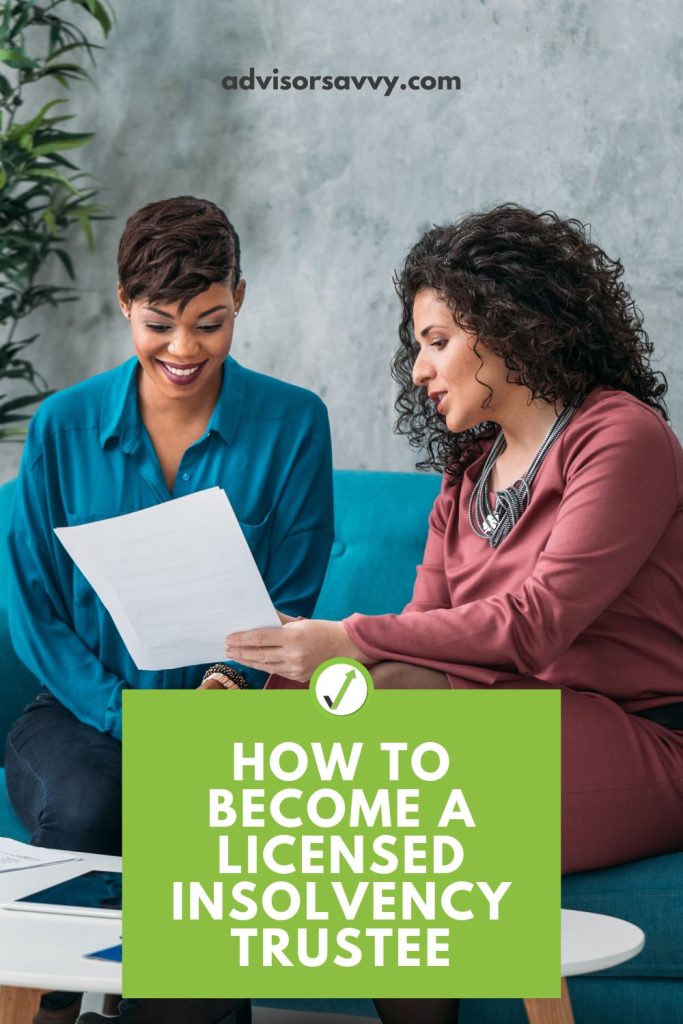For anyone who has filed for insolvency, including consumer proposal or bankruptcy, know that having a relationship with a Licensed Insolvency Trustee is an important step in the journey. In Canada, there are many options for debt relief programs. This can include debt consolidation loans, credit counselling or filing for insolvency. Depending on which option you decide upon will determine the amount of time that you will be enrolled, what percent of the debt you will owe back, and if you need to work with a Licensed Insolvency Trustee. What does a Licensed Insolvency Trustee do, and what certification do they go through? Let’s learn more below.

Table of contents
This article was written in collaboration with Bromwich + Smith, a dedicated team of Licensed Insolvency Trustees and Debt Relief Specialists.
How do you become a Licensed Insolvency Trustee?
To be eligible for admission to the Chartered Insolvency and Restructuring Professional (CIRP) Qualification Program (CQP), individuals must:
- Reside in or practice in Canada, AND
- Have either a relevant professional designation relating to the accounting or auditing field recognized in Canada or an undergrad degree from a recognized post-secondary institution.
LIT Certification Process
Once they are accepted into the program, they will work towards the completion of the Chartered Insolvency and Restructuring Professional (CIRP) Qualification Program (CQP). After which the individual will sit with the Oral Boards with the Office of the Superintendent of Bankruptcy (OSB). After the successful completion of the Competency-Based National Insolvency Examination, candidates be invited to apply for a licence to become a Licensed Insolvency Trustee (LIT).
The CQP program is self directed – meaning there is no set time period, and it really is up to the individual when they choose they are prepared to write the exams. The exams are only offered once a year, so the fastest you will be able to go through the program is 2.5 years. Do not feel discouraged by the process, or the difficulty of the exams. It may take multiple attempts to be successful as it is extremely rare for any individual to pass all the exams on the first attempt. These are not set backs, but will help you truly understand the course information.
Mandatory Professional Development Hours
After being certified as a LIT, A Trustee has mandatory professional development hours that they must complete every year – they can complete the hours in a variety of ways.
Related Reading: What is a Consumer Proposal?
What Qualities Make a Good LIT?
This of course is personal opinion, but as someone who has been in the role and sees the hardships first hand, there are a few traits needed to be successful in this role.
- Communication skills. We are often explaining a very complex processes to people who are unfamiliar with the legislation. We need to take a step back and listen to the questions being asked, and understand that our clients are looking to us for guidance and reassurance. It is our job to listen and advise them.
- Empathy. We have the unique role of being present in peoples lives during their most venerable and difficult times. We are not here to judge, and really do want to help give you the skills to be successful going forward.
- Be reasonable. We need to be open to looking at a situation from more than one side. Open up and explore ways to help even if it hasn’t been an option previously. Each clients situation is unique, and sometimes we need to look at out of the box ideas to help support them.
- Quick on your feet. There are times when you will need to make a decision on a situation where there is not a clear cut answer. You need to be confident in your knowledge to make a decision and help your client succeed.
Choosing to become an LIT is a career path that requires dedication, hard work, and an understanding of the unique challenges that come with administering debt relief programs. However, for those who possess the necessary qualities and qualifications, becoming an LIT can be a rewarding career that helps people regain control of their finances and set them up for a brighter, debt-free future.
Related Reading: Top 10 Tips for Content Engagement for Financial Advisors
Licensed Insolvency Trustees at Bromwich + Smith
We really do connect on a personal level with every client we talk to. I want to see everyone of them grow their skills and walk out with the confidence in themselves to manage their budgets going forward. I do not forget about the clients whose paths cross with mine, and honestly reflect on my time with them, as I hope they do their time with me. There have been a few bankruptcies that I have helped to get their discharge after difficult administrations that wind up in Court. They are often most grateful and its very satisfying to be able to see them through to their discharge. When my clients win, I celebrate those wins as my own too.
We know that there are many Canadians struggle with debt, and that debt relief may seem impossible. We are here to help you regain control of your finances, and set you up for a brighter, debt-free future. By choosing a Licensed Insolvency Trustee, like one at Bromwich+Smith, you can regain your financial freedom and get your finances back on track, today.
Read More: How to Become a Certified Financial Planner in Canada

